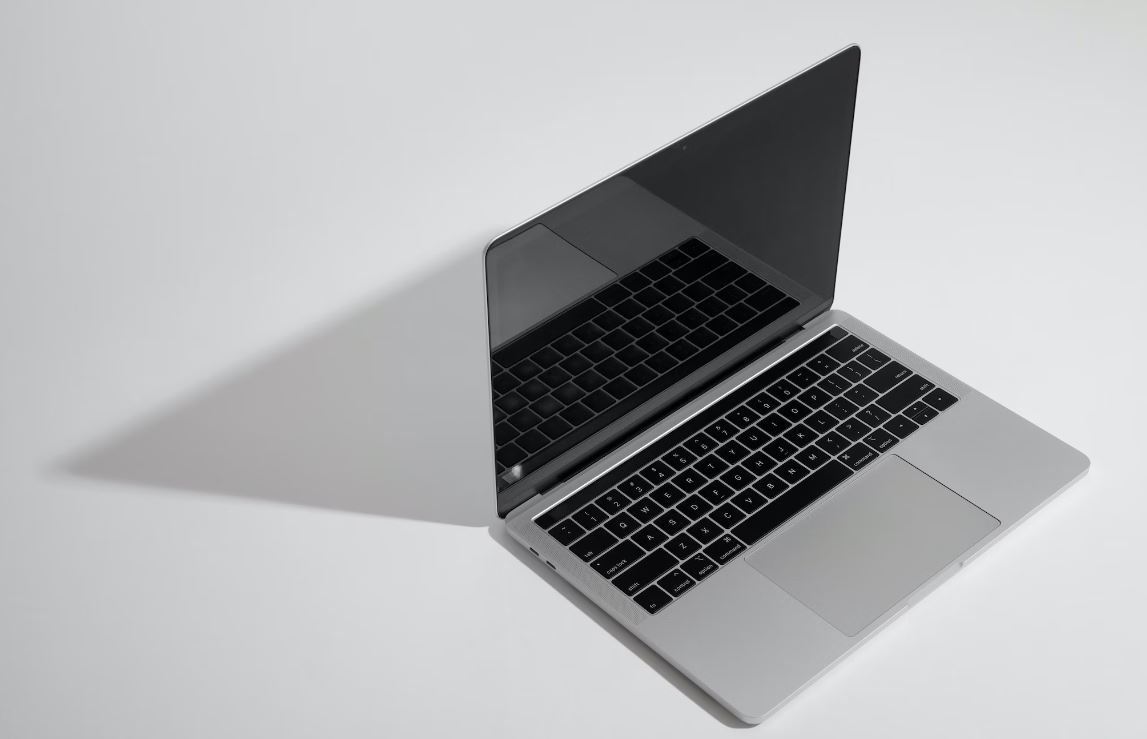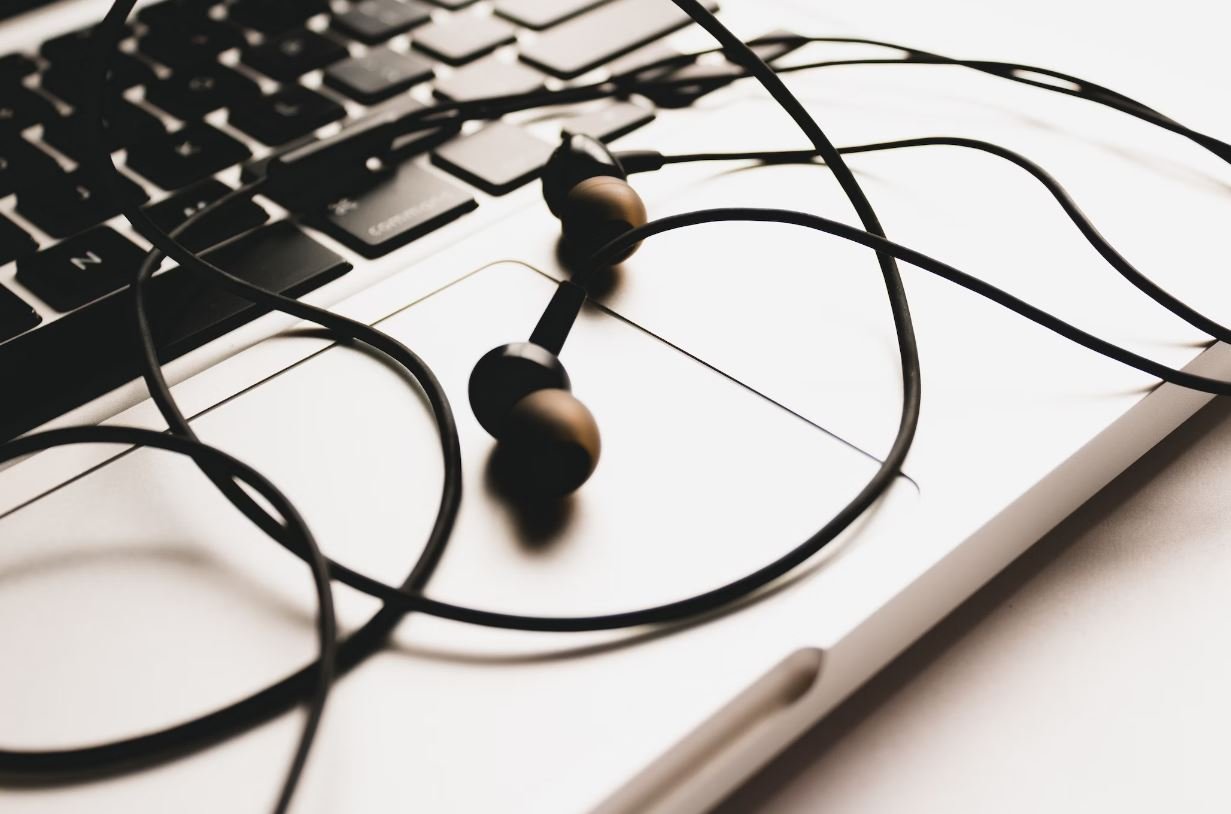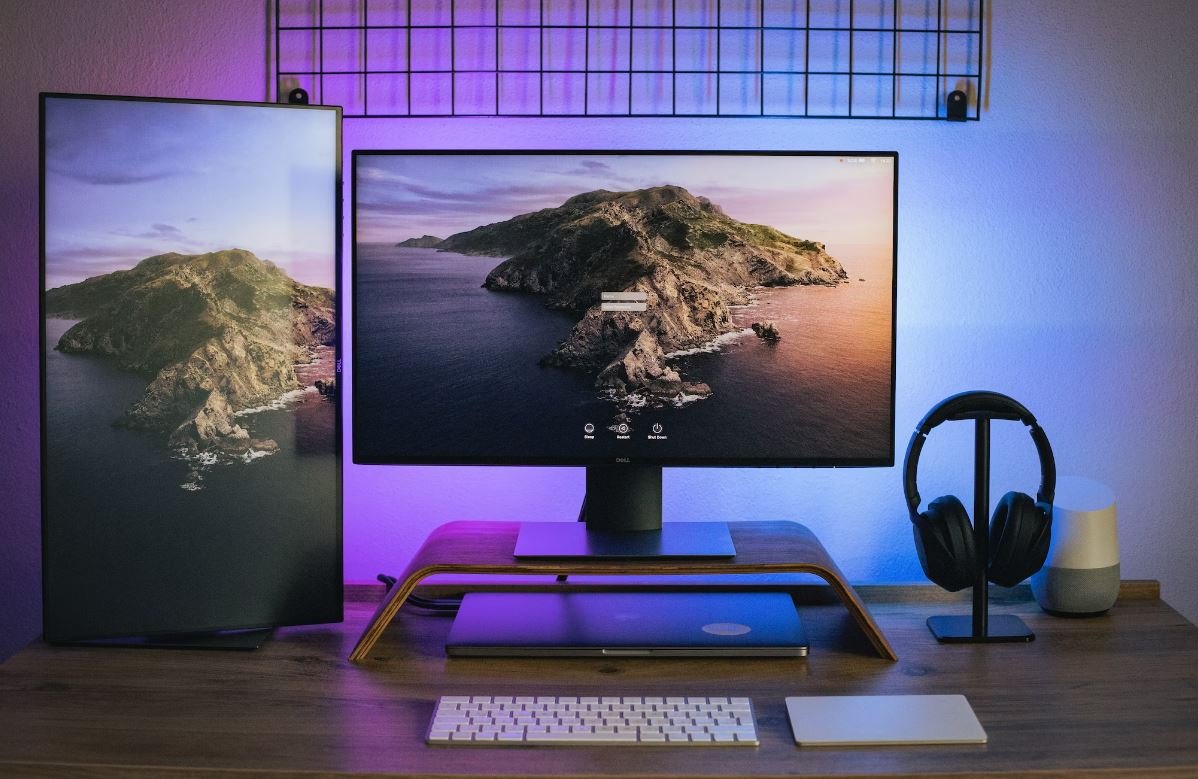Bubble in Illustrator
Adobe Illustrator is a powerful tool for creating visually appealing graphic designs. One of the many features it offers is the ability to create bubble shapes effortlessly. Whether you need to design a logo, icon, or any other graphic element with a bubble shape, Illustrator provides the necessary tools and techniques to achieve the desired result. In this article, we will explore the process of creating a bubble shape in Illustrator.
Key Takeaways:
- Bubble shapes: Learn how to create bubble shapes in Illustrator.
- Customization options: Discover various ways to customize the appearance of bubbles.
- Effects and adornments: Explore special effects and adornments to enhance bubble designs.
Creating a Bubble Shape in Illustrator
To create a bubble shape in Illustrator, follow these steps:
- Open Adobe Illustrator and create a new document.
- Select the Ellipse Tool from the Tools panel.
- Click and drag on the canvas to draw an ellipse shape. Press and hold the Shift key to maintain a perfect circle.
- With the circle selected, go to the Appearance panel and click on the “Add New Stroke” button to add an outline to the shape.
- In the Stroke panel, increase the Stroke Weight to make the outline thicker. Adjust the Stroke Color as desired.
- Next, go to the Fill panel and select a vibrant color for the bubble’s interior.
- To give the bubble a more realistic appearance, apply a gradient to the Fill by selecting the Gradient tool and adjusting the colors and angle accordingly.
- Finally, add highlights and shadows to the bubble by creating additional ellipses with varying transparency and placing them strategically on the shape.
Experiment with different stroke weights and gradient colors to create unique bubble designs.
Customizing Bubble Shapes
Once you have created a basic bubble shape, you can customize it further using Illustrator’s various tools and features:
- Effects: Apply effects like Gaussian Blur or Outer Glow to add depth and dimension to the bubble.
- Transparency: Adjust the transparency of the bubble’s fill or stroke to create interesting visual effects.
- Patterns: Use predefined patterns or create your own pattern swatches to fill the bubble’s interior.
| Effect | Description |
|---|---|
| Gaussian Blur | Blurs the edges of the shape, creating a softer look. |
| Outer Glow | Creates a glowing halo around the bubble. |
Experiment with different effects to create unique and eye-catching bubble designs.
Adding Adornments and Text
To enhance your bubble design, you can add various adornments, such as gradients or patterns, and incorporate text:
- Use the Pen Tool to draw shapes or lines around the bubble.
- Apply gradients or patterns to these shapes to create attractive adornments.
- To add text, select the Type Tool, click on the canvas, and start typing.
- Adjust the font, size, and alignment of the text to complement the bubble design.
| Adornment | Description |
|---|---|
| Gradients | Apply gradients to surrounding shapes for a visually appealing effect. |
| Patterns | Use pattern swatches to fill shapes and add texture. |
By adding adornments and text, you can create unique compositions with your bubble designs.
As you can see, Adobe Illustrator offers a wide range of tools and customization options to create stunning bubble designs. By experimenting with different effects, adornments, and text, you can unleash your creativity and craft visually captivating graphics.
So why wait? Start creating your own bubble designs in Adobe Illustrator today!

Common Misconceptions
Paragraph 1:
One common misconception about creating a bubble effect in Illustrator is that it requires advanced drawing skills. In reality, Illustrator offers various tools and techniques that make it easy to create bubble-like shapes and effects, even for beginners.
- Using the Ellipse Tool, you can quickly draw a perfect circle to form the base of the bubble.
- Applying a gradient fill and adjusting the transparency settings can give the bubble a realistic appearance.
- Using the Warp Tool, you can distort the edges of the circle to create the illusion of a rounded, three-dimensional shape.
Paragraph 2:
Another misconception is that bubbles in Illustrator can only be created using complex scripts or plugins. While there are advanced techniques available, there are also simpler methods that can achieve similar results without any scripting knowledge.
- Using the Blend Tool, you can create a series of circles and blend them together to form a bubble-like shape.
- Applying a thick stroke to the circles and adjusting the stroke properties, such as adding rounded caps, can enhance the bubble effect.
- Applying gradients and opacity masks to the blended shape can add depth and realism to the bubble.
Paragraph 3:
Some individuals may believe that bubbles created in Illustrator are limited to single-color or monochromatic designs. However, Illustrator provides a range of options to add color and style to your bubbles.
- Using the Swatches panel or the Color Picker, you can select and apply vibrant colors to the bubble shape.
- Using the Gradient Tool, you can create colorful gradients that seamlessly blend between multiple colors in the bubble.
- Applying transparency effects like blending modes or adding texture overlays can further enhance the visual appeal of the bubble.
Paragraph 4:
It is also commonly misunderstood that creating realistic bubbles in Illustrator will take a significant amount of time and effort. While intricate designs may require more attention to detail, creating basic bubble effects can be quick and straightforward.
- Using the Ellipse Tool and applying a basic gradient fill can result in a bubble-like shape in a matter of minutes.
- By adjusting the transparency settings or layering multiple shapes, you can achieve a more realistic and vibrant bubble design.
- Experimenting with the available tools and techniques can help you find the most efficient workflow for creating bubbles in Illustrator.
Paragraph 5:
Lastly, some individuals may believe that bubbles created in Illustrator are only suitable for specific types of designs, such as children’s illustrations or playful artwork. In reality, bubbles can be incorporated into various creative projects and styles.
- By adjusting the color palette, stroke properties, and overall style of the bubble, you can adapt the design to match different themes and aesthetics.
- Combining bubbles with other elements like typography, background effects, or object compositions can yield unique and visually appealing designs.
- Exploring different artistic approaches and experimenting with various effects can help you incorporate bubbles into diverse design projects.

Types of Bubbles
Bubbles come in various shapes and sizes. This table showcases some of the most common types of bubbles found in nature and everyday life.
| Type | Description |
|---|---|
| Spherical | The most common type of bubble, typically seen in soap bubbles. |
| Cylindrical | Bubbles formed between two flat surfaces, like soap films on a wireframe. |
| Ellipsoidal | Bubbles with an elongated oval shape, often observed in underwater photography. |
| Toroidal | A doughnut-shaped bubble formed by trapping air inside a soap film loop. |
| Cone | Bubbles that appear conical due to the angle of the blowing device. |
Sizes of Bubbles
Bubbles come in different sizes, from tiny microbubbles to massive bubbles that captivate our imagination. This table explores the variety of bubble sizes.
| Size Category | Diameter Range |
|---|---|
| Microbubble | Less than 0.1 mm |
| Small | 0.1 mm – 1 mm |
| Medium | 1 mm – 10 mm |
| Large | 10 mm – 100 mm |
| Giant | Greater than 100 mm |
Ingredients Affecting Bubble Longevity
The longevity of a bubble depends on several factors. This table highlights some common ingredients and their impact on bubble lifespan.
| Ingredient | Effect on Lifespan |
|---|---|
| Glycerin | Increases bubble lifespan by slowing down evaporation. |
| Sugar | Enhances bubble longevity by creating a more viscous film. |
| Soap Concentration | A higher concentration leads to longer-lasting bubbles. |
| Ambient Humidity | High humidity prolongs bubble life by reducing evaporation rate. |
| Temperature | Cooler temperatures can contribute to bubble longevity. |
Bubble Applications
Bubbles have more uses than just for entertainment. This table showcases some surprising applications of bubbles in various industries.
| Industry | Application |
|---|---|
| Medicine | Ultrasound imaging utilizes microbubble contrast agents. |
| Food and Beverage | Carbonation creates bubbles in sparkling drinks. |
| Firefighting | Firefighters use foam bubbles to extinguish fires more effectively. |
| Manufacturing | Bubbles assist in controlling the flow and mix of fluids in various processes. |
| Art and Design | Bubble wrap provides a protective cushioning material. |
Bubble Popping Speeds
Ever wondered how quickly bubbles can burst? This table reveals the popping speeds of bubbles under certain conditions.
| Condition | Popping Speed |
|---|---|
| No External Force | 0.02-0.05 seconds |
| Pricked with a Needle | Less than 0.01 seconds |
| Exposed to UV Light | Varies depending on the bubble’s thickness and properties. |
| Freezing Temperature | Slower popping speed due to increased viscosity. |
| High Humidity | Bubbles may take longer to burst due to reduced evaporation. |
Bubble-Blowing Techniques
Skilled bubble artists have honed their techniques to create mesmerizing bubble displays. Explore some of these techniques in this informative table.
| Technique | Description |
|---|---|
| Wand Blowing | Using a traditional bubble wand to blow large or small bubbles. |
| Smoke-Filled Bubbles | Adding smoke to the bubble mixture to create visually captivating effects. |
| Giant Bubble Loops | Using specialized rope wands to create colossal bubble loops. |
| Multi-Bubble | Blowing multiple bubbles within one another to create complex bubble formations. |
| Bubble Chains | Linking bubbles together using a straw or bubble wand. |
Bubble Fun Facts
Bubbles have a rich history and fascinating properties. Discover some intriguing facts about bubbles in this captivating table.
| Fact | Description |
|---|---|
| Bubble Shape Optimization | Scientists use bubble shape optimization to determine the most energy-efficient designs. |
| Perfect Sphere Myth | Contrary to popular belief, perfectly spherical bubbles rarely occur naturally. |
| Bubble Burst Velocity | As a bubble accelerates, its burst velocity increases due to the thinning of the film. |
| Bubble Symphony | Bubble artists have created orchestral performances utilizing bubbles as musical instruments. |
| Bubble Olympics | Competitions exist where participants showcase unique bubble creations and techniques. |
Bubble Popularity in History
Bubbles have sparked the fascination of people across centuries. Explore significant historical events involving bubbles in this intriguing table.
| Event | Description |
|---|---|
| Tulip Mania | In the 17th century, tulip bulbs in the Netherlands experienced a speculative bubble. |
| The South Sea Bubble | The South Sea Company’s stock price inflated and subsequently crashed in the early 18th century. |
| The Dot-Com Bubble | A stock market bubble bursted in the early 2000s, impacting numerous technology companies. |
| Mortgage-Backed Securities Crisis | A housing bubble collapsed in 2008, leading to a global financial crisis. |
| The Bitcoin Bubble | Bitcoin experienced significant price volatility, surging and declining rapidly in recent years. |
Bubbles have fascinated humanity for centuries, captivating both young and old alike. From the mesmerizing shapes they take to their playfulness and applications, bubbles never fail to evoke a sense of wonder. This article explored the diverse world of bubbles, from the different types and sizes of bubbles to the ingredients affecting their longevity. We also delved into the intriguing applications of bubbles across various industries and examined the techniques employed to create stunning bubble displays. Additionally, we unveiled some captivating facts about bubbles and highlighted their historical significance in significant events. As we continue to admire and explore the enchanting world of bubbles, they remain a timeless source of joy, entertainment, and scientific curiosity.
Frequently Asked Questions
What is a bubble in Illustrator?
A bubble in Illustrator refers to a round or ellipsoid shape filled with color or gradient. It is often used to depict various objects, such as speech bubbles, thought bubbles, or simple decorative elements in a design.
How can I create a bubble in Illustrator?
To create a bubble in Illustrator, you can use the Ellipse Tool to draw a circle or an ellipse shape. Then, you can apply a fill color or gradient to it, adjust the stroke if needed, and customize the appearance by adding effects or modifying its anchor points.
Can I adjust the size of a bubble in Illustrator?
Yes, you can easily adjust the size of a bubble in Illustrator. Select the bubble shape with the Selection Tool, and then click and drag any of the corner or edge handles to resize it proportionally. You can also manually enter specific dimensions in the Transform panel or in the Control panel.
How do I add text inside a bubble in Illustrator?
To add text inside a bubble in Illustrator, select the bubble shape, and then use the Type Tool to click inside the shape. Once the text cursor appears, you can start typing your desired text. You can also adjust the font, size, color, and other text properties using the options available in the Character panel.
Can I change the color of a bubble in Illustrator?
Yes, you can change the color of a bubble in Illustrator. Select the bubble shape using the Selection Tool, and then pick a new fill color from the Swatches panel or use the color picker to choose a custom color. You can also apply gradients, patterns, or textures to create more complex and visually appealing bubble designs.
Are there predefined bubble shapes available in Illustrator?
No, Illustrator does not provide specific predefined bubble shapes by default. However, you can easily create various bubble shapes using the Ellipse Tool or by manipulating anchor points on existing shapes. Experiment with different sizes, proportions, and modifications to achieve the desired bubble shape.
How can I give a bubble a 3D effect in Illustrator?
To give a bubble a 3D effect in Illustrator, you can use the Gradient Mesh Tool to add depth and shading to the bubble shape. Create a gradient mesh by defining multiple points inside the bubble, and then adjust the colors and transparency of each point to create a realistic 3D appearance. You can also use the Blend Tool or apply various effects, such as shadows or highlights, to enhance the 3D effect.
Can I resize a bubble without distorting its shape in Illustrator?
Yes, you can resize a bubble in Illustrator without distorting its shape by holding down the Shift key while dragging the corner or edge handles. This maintains the aspect ratio of the bubble and allows you to scale it proportionally. Alternatively, you can use the Transform panel or the Control panel to enter the desired dimensions for resizing the bubble.
Is it possible to create transparent bubbles in Illustrator?
Yes, it is possible to create transparent bubbles in Illustrator. Select the bubble shape, and then adjust the transparency of the fill or stroke using the Opacity panel. You can also create a custom gradient fill with transparency stops or apply a blending mode to the bubble to achieve transparency or blending effects. Experiment with different settings to achieve the desired level of transparency.
What are some practical applications of using bubbles in Illustrator?
Bubbles in Illustrator have numerous practical applications. They can be used to create speech or thought bubbles in comic strips or graphic novels, add emphasis to specific elements in an illustration or design, create decorative backgrounds or patterns, depict water or bubbles in underwater or fantasy-themed artworks, or even as design elements in logos or branding materials. The possibilities are vast, limited only by your creativity and imagination.





